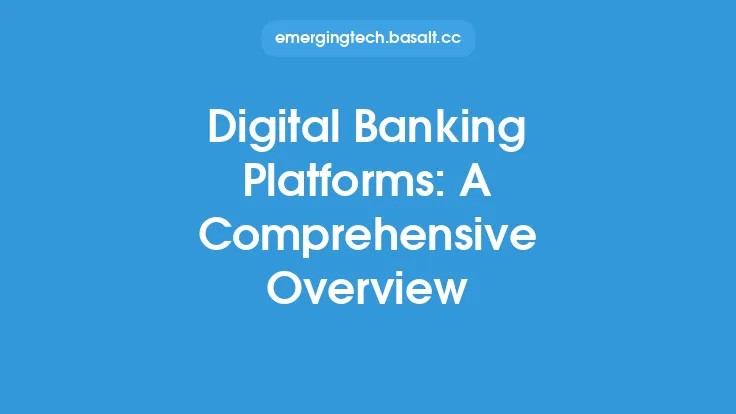The world of digital payments has revolutionized the way we make transactions, providing a convenient, fast, and secure way to pay for goods and services. At its core, a digital payment is an electronic transfer of funds from a payer's account to a payee's account, facilitated by a digital platform or system. This can include online banking, mobile wallets, credit and debit cards, and other digital payment methods.
Introduction to Digital Payment Systems
Digital payment systems are the backbone of digital payments, enabling the secure and efficient transfer of funds between parties. These systems typically consist of several components, including payment gateways, payment processors, and acquiring banks. Payment gateways are the interfaces through which customers enter their payment information, while payment processors handle the transaction processing and settlement. Acquiring banks, on the other hand, are responsible for managing the merchant's account and facilitating the transfer of funds.
Types of Digital Payments
There are several types of digital payments, each with its own unique characteristics and advantages. Credit and debit cards are among the most widely used digital payment methods, allowing customers to make payments online or in-person. Mobile wallets, such as Apple Pay and Google Pay, are another popular option, enabling customers to make contactless payments using their mobile devices. Online banking and electronic funds transfer (EFT) are also common digital payment methods, allowing customers to transfer funds directly from their bank accounts. Additionally, digital currencies like Bitcoin and other cryptocurrencies are gaining traction, offering a decentralized and secure way to make transactions.
Digital Payment Processing
Digital payment processing involves several steps, from authorization to settlement. When a customer makes a digital payment, the payment information is transmitted to the payment gateway, which then sends a request to the issuing bank to verify the customer's account information and available funds. If the transaction is approved, the payment processor handles the settlement, transferring the funds from the customer's account to the merchant's account. This process typically occurs in real-time, allowing for fast and efficient transactions.
Security Measures in Digital Payments
Security is a critical aspect of digital payments, as sensitive payment information is transmitted and stored online. To mitigate the risk of fraud and data breaches, digital payment systems employ various security measures, including encryption, tokenization, and secure sockets layer (SSL) protocols. Encryption scrambles payment information, making it unreadable to unauthorized parties, while tokenization replaces sensitive information with unique tokens. SSL protocols, on the other hand, establish a secure connection between the customer's browser and the payment gateway, ensuring that data is transmitted securely.
Key Players in the Digital Payments Ecosystem
The digital payments ecosystem consists of several key players, each playing a vital role in facilitating transactions. Merchants are the businesses that accept digital payments, while customers are the individuals making the payments. Payment gateways, payment processors, and acquiring banks are the intermediaries that handle the transaction processing and settlement. Issuing banks, on the other hand, are responsible for managing the customer's account and verifying the payment information. Additionally, regulatory bodies and industry associations play a crucial role in overseeing the digital payments industry, ensuring compliance with laws and regulations.
Technical Infrastructure for Digital Payments
The technical infrastructure for digital payments is complex and multifaceted, involving various technologies and systems. Payment gateways, for example, rely on application programming interfaces (APIs) to integrate with merchant websites and mobile applications. Payment processors, on the other hand, use sophisticated algorithms and machine learning models to detect and prevent fraud. The underlying infrastructure for digital payments also includes data centers, cloud computing platforms, and network protocols, such as TCP/IP and HTTP. Furthermore, digital payment systems must comply with industry standards, such as the Payment Card Industry Data Security Standard (PCI DSS), to ensure the secure handling of sensitive payment information.
International Digital Payments
International digital payments involve cross-border transactions, where funds are transferred between parties in different countries. These transactions are typically more complex and involve additional steps, such as currency conversion and compliance with international regulations. To facilitate international digital payments, payment systems must be able to handle multiple currencies, languages, and payment methods. This requires a high degree of interoperability and standardization, as well as compliance with international laws and regulations, such as anti-money laundering (AML) and know-your-customer (KYC) regulations.
Conclusion
In conclusion, digital payments are a complex and multifaceted field, involving various technologies, systems, and stakeholders. Understanding the different types of digital payments, payment processing, security measures, and key players in the ecosystem is essential for navigating this landscape. As the digital payments industry continues to evolve, it is likely that we will see new technologies and innovations emerge, such as blockchain and artificial intelligence. By staying informed and up-to-date on the latest developments, individuals and businesses can harness the benefits of digital payments, including convenience, speed, and efficiency.





